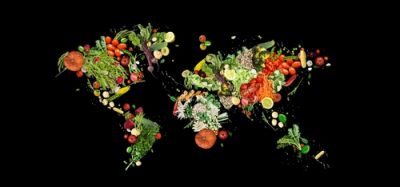Electronic nose app could judge whether meat is safe to eat or not
- Like
- Digg
- Del
- Tumblr
- VKontakte
- Buffer
- Love This
- Odnoklassniki
- Meneame
- Blogger
- Amazon
- Yahoo Mail
- Gmail
- AOL
- Newsvine
- HackerNews
- Evernote
- MySpace
- Mail.ru
- Viadeo
- Line
- Comments
- Yummly
- SMS
- Viber
- Telegram
- Subscribe
- Skype
- Facebook Messenger
- Kakao
- LiveJournal
- Yammer
- Edgar
- Fintel
- Mix
- Instapaper
- Copy Link
Posted: 13 November 2020 | Joshua Minchin (New Food) | No comments yet
Scientists behind the research claim the electronic nose can detect the freshness of meat with 98.5 percent accuracy. It’s possible the technology could be incorporated into a smartphone app that would help detect ‘gone off’ meat at home.


Scientists behind the electronic nose are hopeful that it could one day replace best before dates.
A team of scientists led by Nanyang Technological University, Singapore (NTU Singapore) has invented an ‘electronic nose’ that mimics the mammalian nose to assess the freshness of meat accurately.
The ‘electronic nose’ (e-nose) consists of a barcode that changes colour over time in reaction to the gases produced by meat as it decays, and a barcode reader in the form of a smartphone app powered by artificial intelligence (AI). The e-nose has been trained to recognise and predict meat freshness from a large library of barcode colours.
When tested on commercially packaged chicken, fish and beef meat samples that were left to age, the team found that the AI algorithm that powers the e-nose predicted the freshness of the meats with a 98.5 percent accuracy.1
The team behind the new e-nose hopes that it could prevent excessive food waste, as it could have the potential to tell consumers whether or not meat is safe to eat with a lot more accuracy than a standard best before date.
Electronic noses are not new. Extensive research has been undertaken into the technology, but the stumbling block of accessibility has meant that so far, they have failed to make it onto the commercial market. The difference in the e-nose developed by NTU is the deep convolutional neural networks (DCNNs), which mimics the processes that happen in an animal brain. This technology is combined with ‘barcodes’, with each bar consisting of chitosan acetate and a coloured dye. These barcodes then change colour depending on gases released from the meat, and the resulting barcode is read by the DCNN to judge whether the meat is ‘off’ or not.1
Scientists are hoping that a DCNN ‘trained’ in 3,475 different scents could be effectively incorporated into a smartphone app – offering the opportunity for consumers to have this technology at home and eliminating a reliance on best before dates.
Co-lead author Professor Chen Xiaodong, the Director of Innovative Centre for Flexible Devices at NTU, was hopeful of the progress the e-nose could potentially bring about. “Our proof-of-concept artificial olfactory system, which we tested in real-life scenarios, can be easily integrated into packaging materials and yields results in a short time without the bulky wiring used for electrical signal collection in some e-noses that were developed recently,” he explained.
“These barcodes help consumers to save money by ensuring that they do not discard products that are still fit for consumption, which also helps the environment. The biodegradable and non-toxic nature of the barcodes also means they could be safely applied in all parts of the food supply chain to ensure food freshness.”
References
1. https://onlinelibrary.wiley.com/doi/10.1002/adma.202004805
Related topics
Equipment, Food Safety, Food Waste, Gas Chromatography/Mass Spec (GC/MS), Rapid Detection, Research & development, Shelf life, Technology & Innovation








